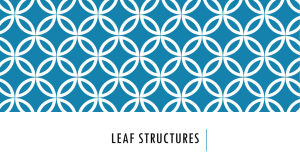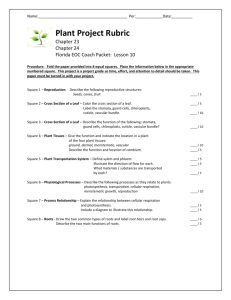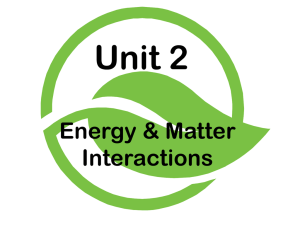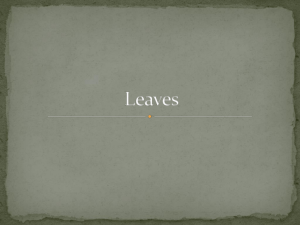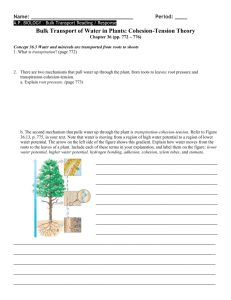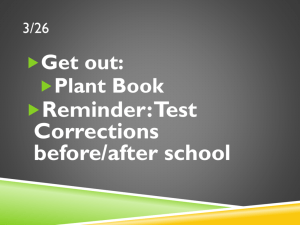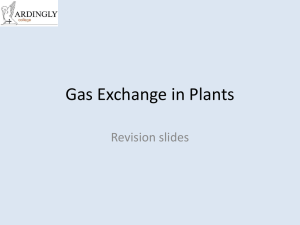File
advertisement
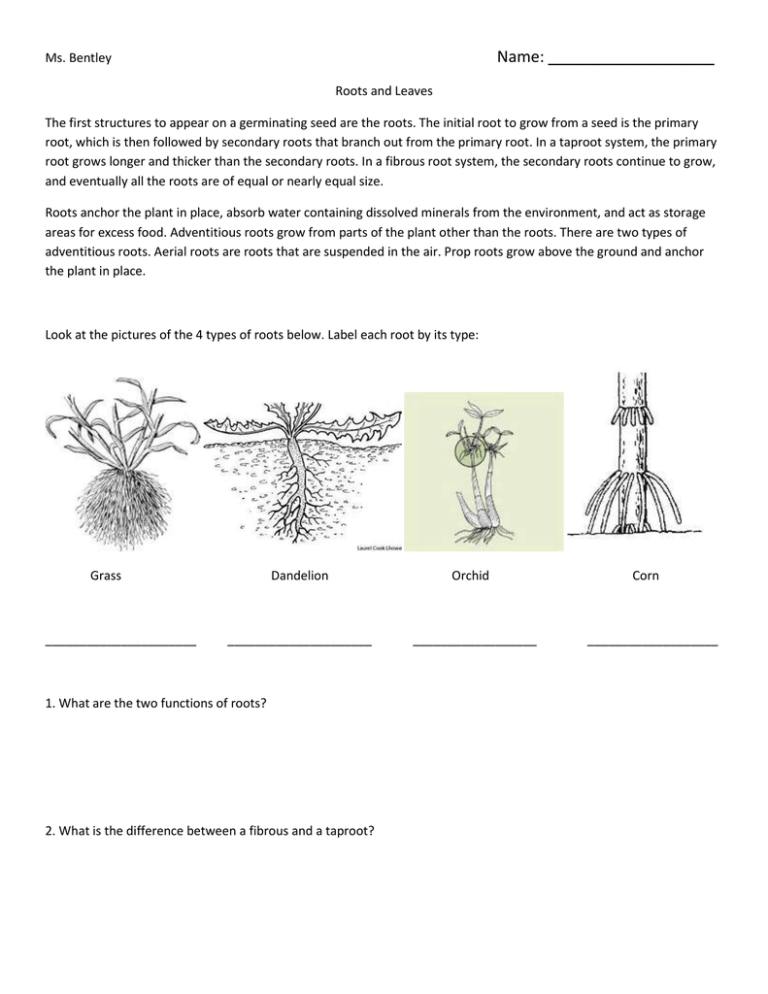
Name: ___________________ Ms. Bentley Roots and Leaves The first structures to appear on a germinating seed are the roots. The initial root to grow from a seed is the primary root, which is then followed by secondary roots that branch out from the primary root. In a taproot system, the primary root grows longer and thicker than the secondary roots. In a fibrous root system, the secondary roots continue to grow, and eventually all the roots are of equal or nearly equal size. Roots anchor the plant in place, absorb water containing dissolved minerals from the environment, and act as storage areas for excess food. Adventitious roots grow from parts of the plant other than the roots. There are two types of adventitious roots. Aerial roots are roots that are suspended in the air. Prop roots grow above the ground and anchor the plant in place. Look at the pictures of the 4 types of roots below. Label each root by its type: Grass ______________________ Dandelion _____________________ 1. What are the two functions of roots? 2. What is the difference between a fibrous and a taproot? Orchid __________________ Corn ___________________ 3. Do root hairs appear to significantly increase the volume or the surface area of a root? What benefit does this increase provide for the plant? 4. Which root is more likely to be a food source – a fibrous root or a taproot? Explain. Give an example of a taproot you eat. Leaves are the main organs of photosynthesis in a plant. In order to produce sugars, leaves must have a way of obtaining the materials needed for photosynthesis as well as distributing its end products. In order to collect sunlight, most leaves have thing, flattened sections called blades. Leaves have an outer covering of dermal tissue and inner regions of ground and vascular tissues. The top and bottom are covered by epidermal cells. The epidermal cells are covered by a waxy cuticle on many leaves. This forms a waterproof barrier that limits the loss of water through evaporation. The vascular tissue in the leaf contains bundles called xylem and phloem. The bulk of the leaf is made of ground tissue called mesophyll. Photosynthesis takes place in the mesophyll of most plants. Air spaces called stomata (stoma is singular) are tiny openings on the underside of leaves. These allow carbon dioxide, oxygen and water vapor to diffuse into or out of the leaf. Two guard cells expand or contract to control whether the stomata is open or closed. When water enters the guard cells, they swell and bulge so that there is an opening (stomata). When water leaves the guard cells, they shrink and relax the opening. Generally, the stomata are open during the day and closed at night. Stomata may also be closed when the weather conditions are hot and dry and water conservation is needed. 1. Use clear nail polish to paint a small section of the underside of a leaf. Allow the nail polish to dry for 10 minutes. Set aside and work on #s 2-4. 2. What is the main function of the leaf? Why do they need to do this function? 3. How are leaves protected from the excessive loss of water? 4. What would happen to a plant if its stomata stayed open all the time? 5. Now look at the leaf with the nail polish. If the polish is completely dry, press clear tape over it. Carefully peel the polish from the leaf by pulling gently on the tape. The polish should remain in one piece on the tape. Turn the tape so the sticky side is down and place it on a slide. Place the slide on the microscope stage. Locate the stomata on low power. Turn on high power. Draw the outline of a leaf. Draw stomata on the leaf. Count the number of stomata. _____________X ______________ # stomata 6. Describe an environment where the leaves would have stomata that are closed most of the time. 7. In what part of the leaf does photosynthesis usually occur? Take a clean slide and drop one drop of water on it. Take one small leaf from a sprig of Elodea and place it on the slide, in the water. Carefully place a cover slip over the leaf and water. Draw 5-6 cells from the Elodea under high power. Label the cell membrane, cell wall, chloroplasts, and cytoplasm. 8. How does the leaf get water for photosynthesis? 9. How does the leaf get carbon dioxide for photosynthesis? 10. What happens to the sugars after they are produced? 11. What happens to the oxygen made during photosynthesis? 12. Look at the cross section of the leaf. Label the epidermis, cuticle, vascular bundles, mesophyll, stomata, and guard cells. 13. Research the plants below and suggest some possible adaptations for the different shapes and sizes of these leaves. Type of Plant Pitcher plant or Venus fly trap Rock plants Pine needles Broadleaf Cactus Adaptation

